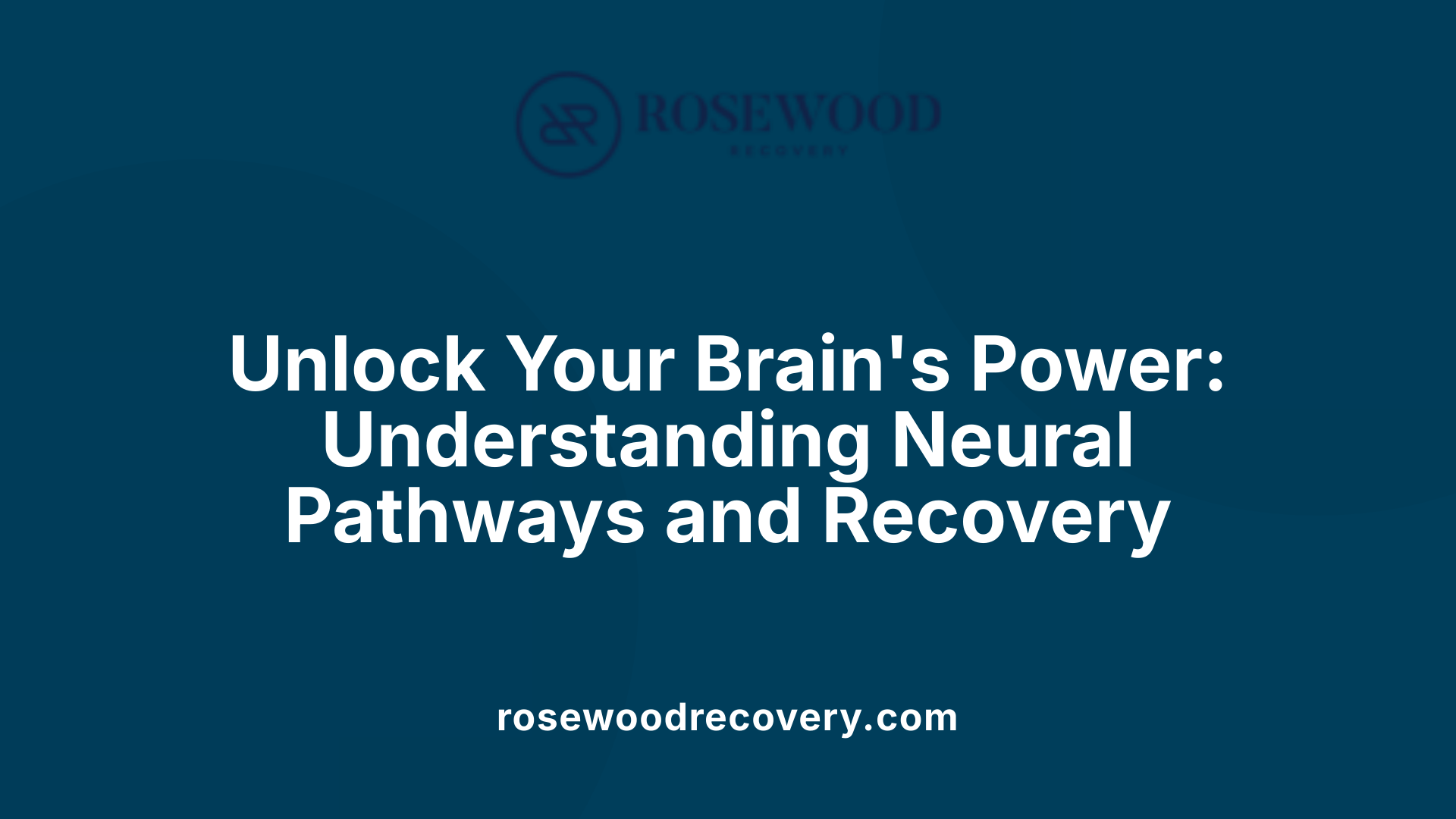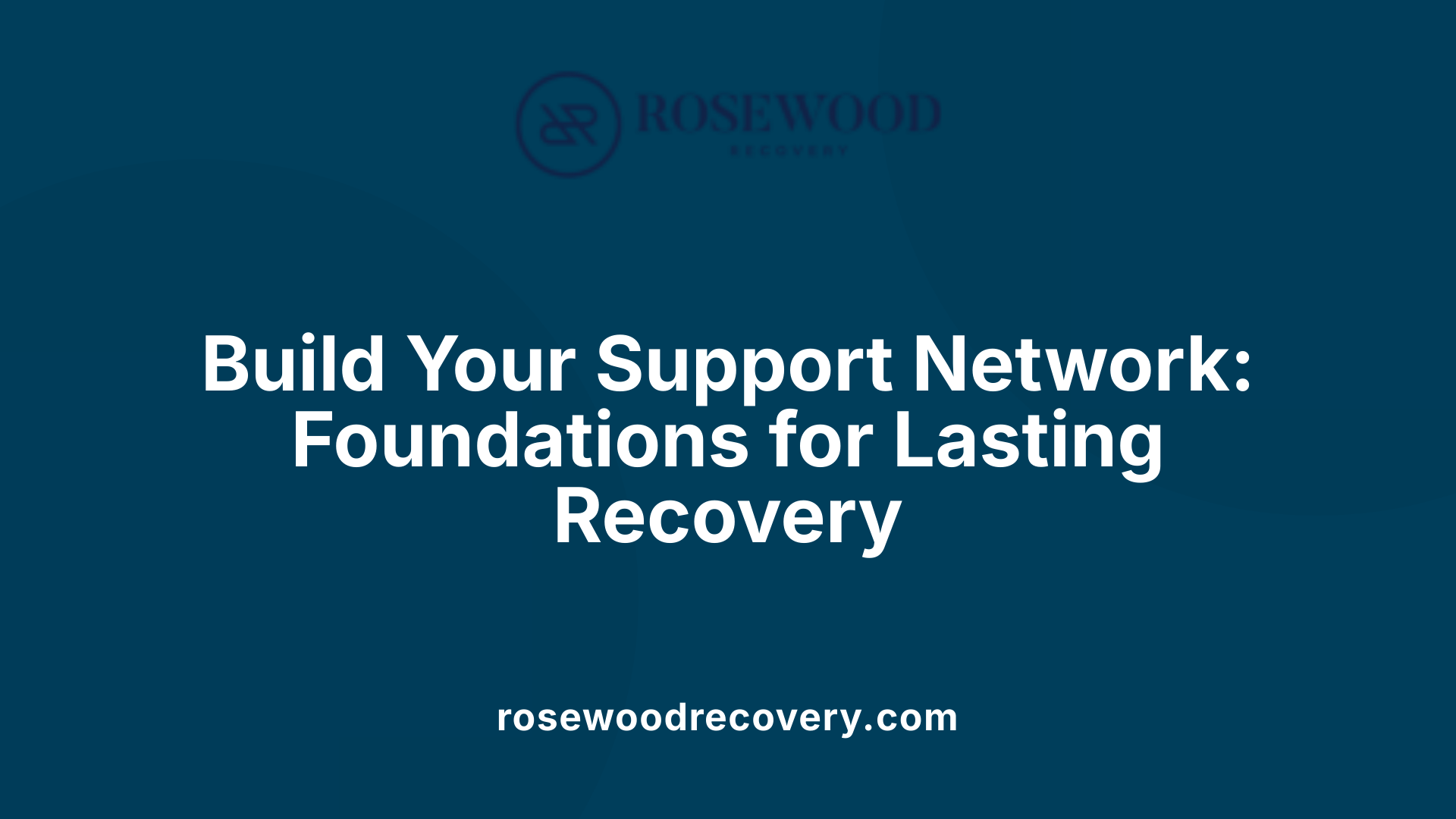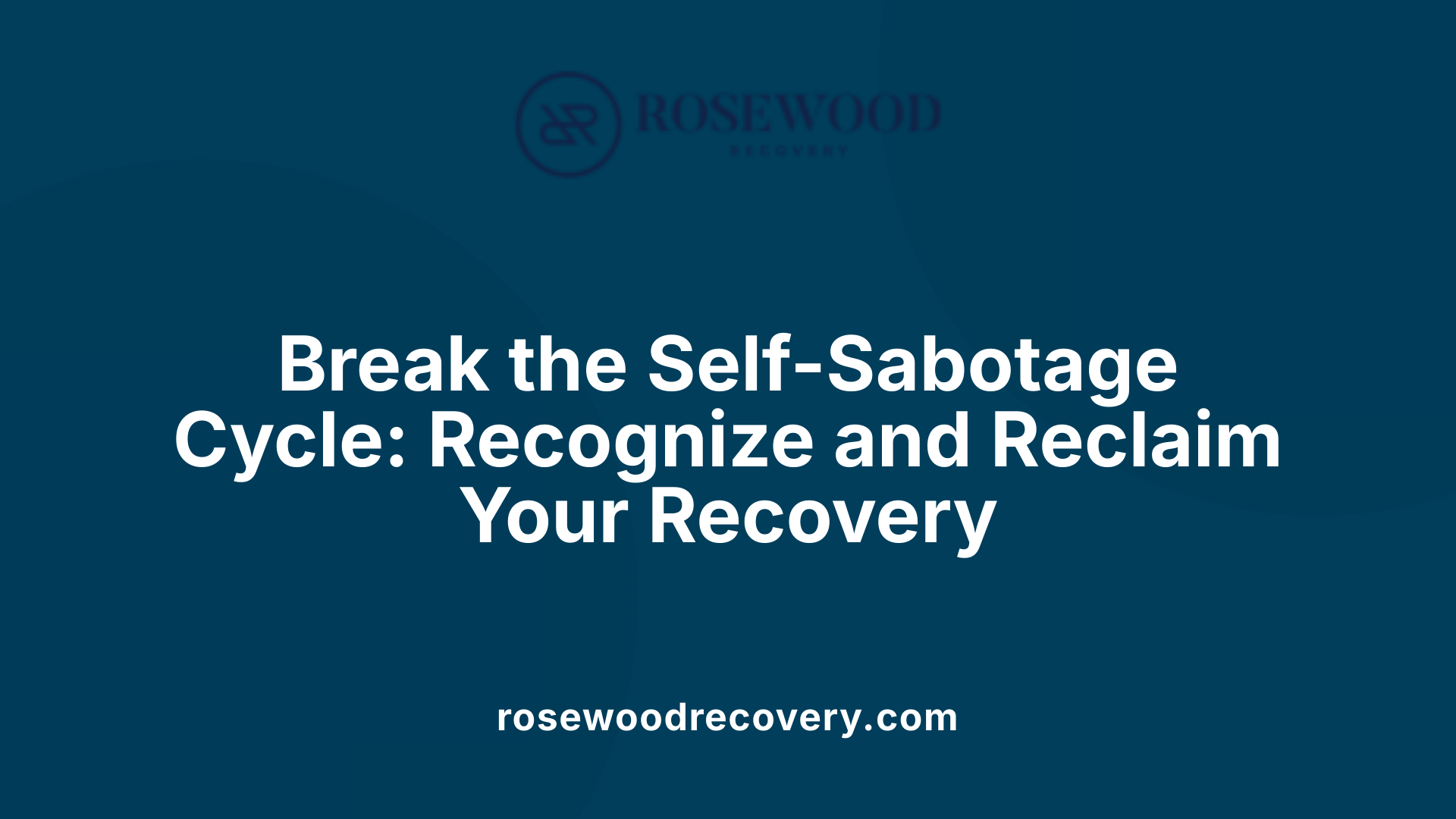How to identify emotional habits that sabotage recovery
Breaking Free from Self-Sabotage in Recovery Journey

Understanding Emotional Habits that Impede Recovery
Recovery from addiction and mental health challenges is a deeply personal journey marked by progress and setbacks. Recognizing and addressing emotional habits that sabotage recovery is essential for sustained growth. These habits—rooted in unresolved emotional issues—can stealthily undermine efforts, leading to relapse, emotional instability, and diminished quality of life. This article explores how to identify these harmful patterns, understand their psychological underpinnings, recognize the signs and stages of emotional interference, and implement effective strategies to foster healthier emotional habits that support lasting recovery.
Identifying Self-Sabotaging Emotional Patterns
How can I identify emotional habits that hinder or sabotage recovery?
Recognizing emotional habits that interfere with recovery involves paying close attention to recurring negative behaviors and feelings. Common signs include procrastination, perfectionism, avoidance of responsibilities, and persistent self-criticism. These behaviors often serve as attempts to cope with underlying emotional discomfort or past trauma.
To delve deeper, examine the beliefs and emotions fueling these actions. Are you often doubting your ability to stay sober? Do feelings of shame or low self-worth drive you to disconnect from support systems? Using tools like journaling, self-reflection, or therapy can help uncover these patterns. Noticing moments when you feel overwhelmed or engage in self-defeating thoughts can alert you to underlying triggers.
It's essential to observe if your actions conflict with your recovery goals or core values. For example, skipping therapy sessions or social support groups repeatedly signals sabotaging tendencies. Increasing awareness of these habits enables you to implement small, compassionate changes—such as practicing self-forgiveness or developing alternative responses—to build healthier emotional patterns that support long-term recovery.
The Role of Unresolved Emotional Pain in Sabotage
What are the root emotional causes that lead to self-sabotage in recovery?
Self-sabotage in recovery is frequently linked to deep emotional issues, particularly trauma, shame, and unmet emotional needs. Traumatic experiences—such as abuse, neglect, or significant loss—can embed feelings of fear, helplessness, or fear of judgment deep within an individual. These unresolved traumas often generate negative core beliefs about oneself, such as feelings of inadequacy or guilt, which foster maladaptive behaviors like avoidance or harsh self-criticism.
Shame plays a powerful role by eroding self-esteem and self-worth. When individuals carry shame, they might believe they are unworthy of success or happiness, making it difficult to accept progress or seek necessary support. This internal negative dialogue can perpetuate a cycle of secrecy and self-defeating actions.
In addition, unmet emotional needs—such as the craving for love, acceptance, safety, or a sense of competence—can lead individuals to revert to familiar, often harmful coping mechanisms. These might include risky behaviors, self-isolation, or substance use as a way to fill emotional voids.
Addressing these underlying issues through counseling, therapy, and emotional work allows individuals to recognize and heal these wounds. Developing healthier emotional responses and self-understanding enhances resilience, diminishes tendencies toward sabotage, and supports sustained recovery.
The Impact of Brain Chemistry and Neural Patterns on Emotional Habits

How do brain chemistry and neural pathways influence self-sabotaging behaviors?
Brain chemistry, especially involving neurotransmitters like dopamine, significantly affects how self-sabotaging behaviors develop and persist. Dopamine is central to the brain's reward system; it provides feelings of pleasure and reinforcement when we engage in certain activities. When addictive substances or risky behaviors stimulate dopamine release, they create powerful pleasurable sensations, reinforcing these actions and making them addictive in nature.
Over time, these behaviors strengthen specific neural pathways associated with reward and habit formation. As these pathways become more ingrained, the brain starts to automatically activate these responses during stressful situations or emotional triggers, leading to habitual engagement in destructive behaviors.
The prefrontal cortex, a brain area responsible for impulse control, decision-making, and emotional regulation, is often impaired by chronic substance use or prolonged stress. Damage or reduced activity in this region diminishes a person's ability to resist temptations, value long-term goals, or regulate emotions effectively.
Furthermore, the amygdala, the brain's center for processing fear and emotional reactions, can become hyperactive. This hyperactivity increases stress and anxiety levels, which in turn triggers cravings and heightens the risk of relapse. The combined effect of these altered neural processes creates a challenging cycle where destructive behaviors are reinforced, making recovery more difficult.
Understanding how brain chemistry and neural wiring influence self-sabotaging behaviors emphasizes the importance of comprehensive treatment approaches. Such approaches often include techniques designed to retrain neural pathways, improve emotional regulation, and restore healthier responses to stress and emotional discomfort.
In what ways do addiction and habitual thinking reinforce emotional sabotage?
Addiction and habitual patterns of thinking play a significant role in reinforcing emotional sabotage. When addictive behaviors or negative thought patterns become ingrained, they create strong neural pathways that activate automatically, especially during times of emotional distress or stress.
The brain's reward system, which becomes hijacked during addiction, diminishes the capacity for natural pleasure and increases the desire for substances or compulsive behaviors. This leads to cravings that are difficult to resist, reinforcing the cycle of use and emotional instability.
Habitual thinking, such as negative self-talk, focusing on failures, or minimizing achievements, further entrenches emotional sabotage. These patterns reinforce feelings of unworthiness, failure, or hopelessness. As the neural circuits associated with these thoughts are repeatedly activated, they become more automatic, making it challenging for individuals to break free from toxic thought cycles.
Over time, these reinforced circuits contribute to rigid habits and emotional dysregulation, which hinder recovery efforts and undermine personal growth. To counteract this, targeted therapies like cognitive-behavioral therapy and mindfulness practices work to rewire these neural pathways. They help individuals develop healthier coping strategies, alter negative thinking patterns, and build resilience against emotional sabotage.
Addressing the neural basis of addiction and habitual thinking highlights the importance of a multi-faceted treatment approach that combines behavioral, psychological, and neurological interventions to promote lasting recovery.
The Role of Self-Efficacy and Fear of Success or Failure

How do self-efficacy and fears of success or failure contribute to self-sabotage?
Self-efficacy, or the belief in one's capacity to succeed, plays a critical role in recovery from addiction. When individuals have low self-confidence, they often doubt their ability to maintain sobriety or handle life's challenges. This lack of belief fuels negative thought patterns and emotional habits that lead to self-sabotage, such as procrastination, avoidance, or self-criticism.
Fears of failure and success are significant internal conflicts that trigger self-destructive behaviors. The fear of failure may cause individuals to avoid trying new strategies or engaging in efforts that could lead to growth, out of fear of falling short. Conversely, the fear of success can generate anxiety about maintaining progress or dealing with increased expectations, which may provoke feelings of unworthiness or overwhelm.
These conflicting fears create a destructive cycle. When someone doubts their ability to succeed, they may undermine their efforts through self-doubt and negative self-talk. At the same time, fears about success can cause worry about how life might change, leading to behaviors that hinder progress.
Strengthening self-efficacy is essential for overcoming these internal barriers. Strategies like setting realistic goals, celebrating small achievements, and practicing positive reinforcement help build confidence. Recognizing and challenging fear-based thoughts enables individuals to develop a healthier outlook, supporting sustainable recovery.
Creating a Supportive Environment to Sustain Progress

What role does social support play in overcoming emotional barriers to recovery?
Support networks are fundamental to overcoming emotional obstacles faced during recovery from substance use disorders. These networks include family members, friends, support groups like those facilitated by SAMHSA’s National Helpline, and various community organizations. They serve to provide encouragement, accountability, and validation, which are crucial when battling feelings of guilt, shame, or hopelessness.
Having trusted individuals around helps reduce the sense of isolation, a behavior that can deepen emotional struggles and hinder progress. By sharing experiences and receiving empathy, individuals learn that they are not alone in their journey. Support networks also help in recognizing early signs of emotional relapse, such as mood swings, irritability, or withdrawal, allowing for timely intervention.
Moreover, involvement in community activities fosters resilience by creating a sense of belonging and shared purpose. Support groups provide a safe space for expressing fears, successes, and setbacks, helping members develop healthier emotional responses and coping strategies.
How can setting healthy boundaries and involving professionals support recovery?
Establishing clear boundaries with others is a practical step to maintain emotional stability and prevent self-sabotage. Boundaries help individuals protect their mental space from toxic relationships or unhelpful influences that could trigger relapse or negative behaviors. They promote self-care by allowing individuals to prioritize their recovery goals.
In parallel, engaging with professional services greatly enhances recovery efforts. Therapists, counselors, or treatment programs offer expert guidance tailored to individual needs. These professionals assist in identifying underlying emotional issues like trauma, depression, or anxiety—factors that often contribute to self-sabotaging behaviors.
Professional help offers structured approaches such as cognitive-behavioral therapy (CBT), which challenge unhealthy beliefs and thought patterns. It also provides accountability, helping individuals stay committed and motivated. When combined, boundaries and professional intervention create a secure environment conducive to long-term change and emotional healing.
Supporting Factors for Sustained Recovery
| Aspect | Description | Benefits |
|---|---|---|
| Support Networks | Family, friends, community groups | Reduce isolation, provide validation |
| Boundaries | Personal limits with others | Protect mental health, prevent triggers |
| Professional Help | Therapists, counselors, treatment programs | Offer tailored strategies, accountability |
| Community Involvement | Support groups, local activities | Build resilience, foster belonging |
Understanding and employing these aspects of social and professional support can significantly diminish the emotional barriers that threaten recovery. Together, they form a wall against the internal and external challenges that can lead to self-sabotage, ensuring that individuals stay on their path to sustained sobriety and well-being.
The Cycle of Self-Sabotage and How to Break It

Recognizing the Cycle
Self-sabotage in recovery often follows a repeating pattern driven by underlying emotional triggers. It usually begins with an uncomfortable emotion—such as fear of failure, guilt, shame, or stress—that individuals may find difficult to confront. This emotional discomfort prompts responses like avoidance, denial, or unhealthy coping mechanisms.
Common self-sabotaging behaviors include missing therapy sessions, withdrawing from support groups, engaging in risky situations, or negative self-talk that diminishes confidence. These behaviors temporarily reduce pain or discomfort but ultimately deepen emotional distress and feelings of unworthiness.
This pattern sustains itself as feelings of shame and guilt fuel further avoidance, reinforcing negative thought patterns and destructive behaviors. Over time, this cycle can significantly hinder progress in recovery, increasing the chances of relapse, emotional instability, and strained relationships.
Impact of Emotional Reactions
Emotional reactions are at the core of self-sabotage. When individuals bottle up their feelings or suppress emotional responses, they may experience emotional relapse—characterized by poor self-care, isolation, and denial of their emotions.
The brain’s response to stress involves increased activity in the amygdala, which heightens feelings of anxiety and craving, further exacerbating the cycle. At the same time, chronic substance use impairs the prefrontal cortex, reducing impulse control and decision-making abilities, making it harder to break free from harmful behaviors.
Negative biases in thinking—such as focusing on failures and ignoring successes—contribute to feelings of hopelessness and low self-esteem. These cognitive distortions create a fertile ground for self-sabotaging actions.
Steps to Disrupt Patterns
Breaking the cycle of self-sabotage requires a multi-faceted approach focused on increasing awareness and fostering healthier responses.
Recognize and Name Emotions: The first step is becoming aware of emotional triggers. Using tools like the HALT acronym (hungry, angry, lonely, tired) can help identify when emotions are running high.
Practice Self-Compassion: Responding kindly to oneself during emotional distress reduces shame and guilt. Forgiving past mistakes and understanding that setbacks are part of recovery lesson emotional turmoil.
Implement Mindfulness: Regular mindfulness exercises help stay present and observe emotions without judgment, enabling better management of reactions.
Engage in Cognitive Restructuring: Challenging negative beliefs about oneself—like feeling unworthy or incapable—can diminish self-sabotaging thoughts.
Develop Healthy Routines: Establishing routines around self-care, schedules, and support can create stability and reduce impulsive reactions.
Seek Ongoing Support: Talking with therapists, support groups, or trusted friends helps process emotions and reinforces accountability.
Celebrate Small Wins: Recognizing progress, no matter how minor, boosts confidence and motivation.
Create Effective Coping Strategies: Techniques such as deep breathing, journaling, and visualization can manage stress and prevent emotional relapse.
Addressing deep emotional issues through therapy and support is crucial for sustainable recovery. As individuals learn to identify and manage their emotional responses, they can disrupt self-sabotage patterns, leading to healthier behaviors and improved quality of life.
Understanding the cycle of self-sabotage and actively working to break it is vital for lasting recovery. The process involves patience, self-awareness, and a commitment to change. Support systems like SAMHSA’s National Helpline provide invaluable assistance, offering free, confidential, 24/7 guidance for those struggling with emotional or substance use issues. Recognizing the signs early and taking proactive steps can help individuals overcome barriers, achieve their goals, and build a fulfilling life in recovery.
Fostering Emotional Resilience for Long-Term Recovery
Overcoming self-sabotage in recovery is a multifaceted process rooted in understanding emotional habits and their origins. By recognizing the signs and stages of emotional interference, addressing root causes like trauma and shame, and employing targeted strategies such as mindfulness, therapy, and support networks, individuals can rewiring negative patterns. Building emotional resilience requires ongoing self-awareness, compassionate self-talk, and a commitment to healthy routines. Creating a supportive environment and understanding the brain's role in habit formation further bolsters long-term success. With dedication and the right tools, recovery becomes not only possible but sustainable, leading to a more fulfilling, balanced life.
References
- National Helpline for Mental Health, Drug, Alcohol Issues - SAMHSA
- Self-Sabotage in Recovery: Key Insights You Need to Know
- Recognizing Sabotage From Loved Ones (But Also From You)
- Relapse Prevention and the Five Rules of Recovery - PMC
- Recognizing and Overcoming Self-Sabotage in Recovery
- 5 Self-Sabotaging Worksheets For Your Clients - Positive Psychology
- Self-Sabotage in Addiction - Vero Beach Recovery Center
More Articles
Recovery Begins Here
Click below to get in touch and schedule a consult call with our team to begin your journey towards happiness and freedom.
Rosewood Recovery does not discrimate against any person because of the race, color, religious creed, ancestry, age, sex, sexual orientation, gender identity, national origin, handicap or disability or the use of a guide or support animal because of the blindness, deafness or physical handicap.





